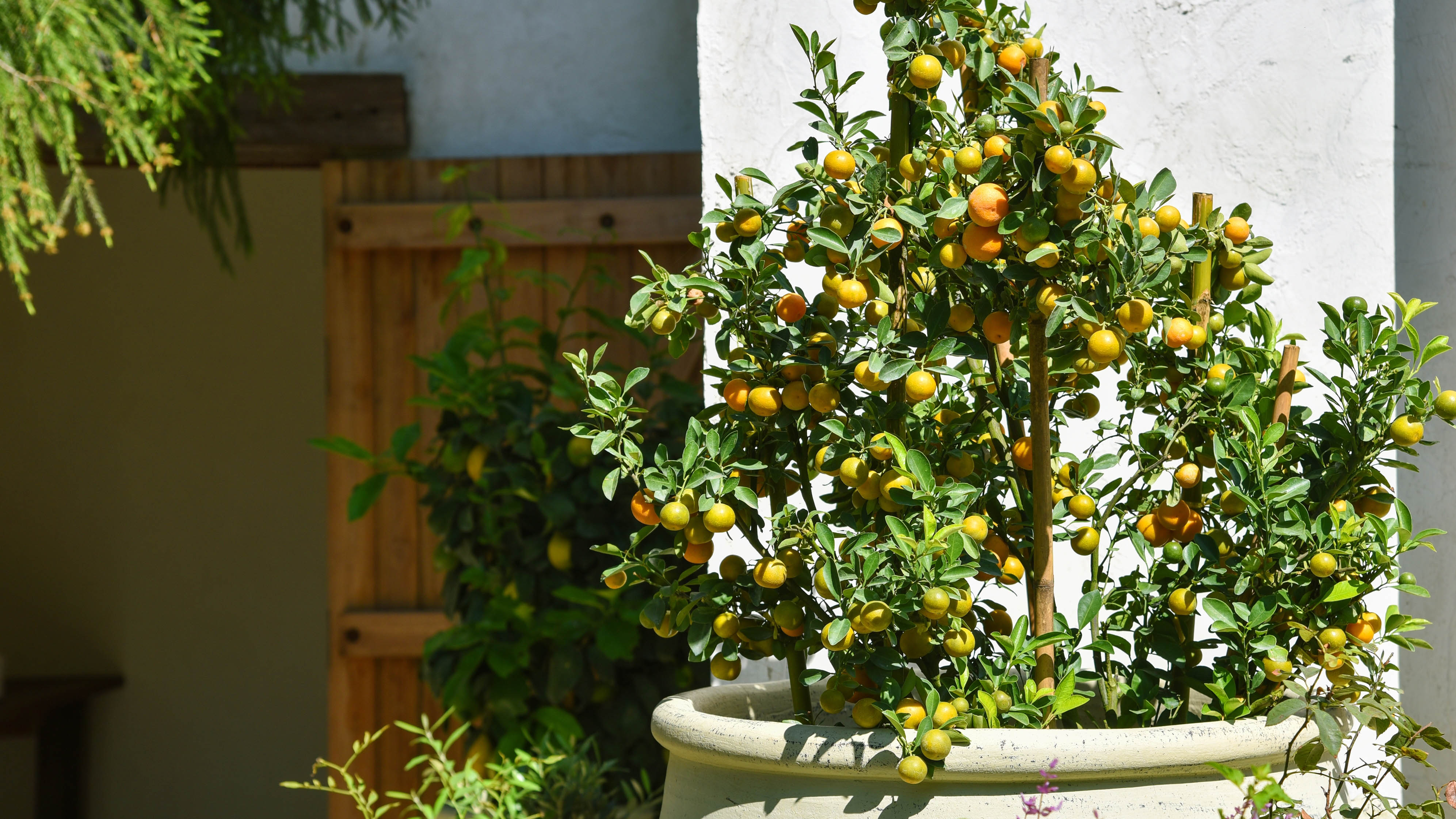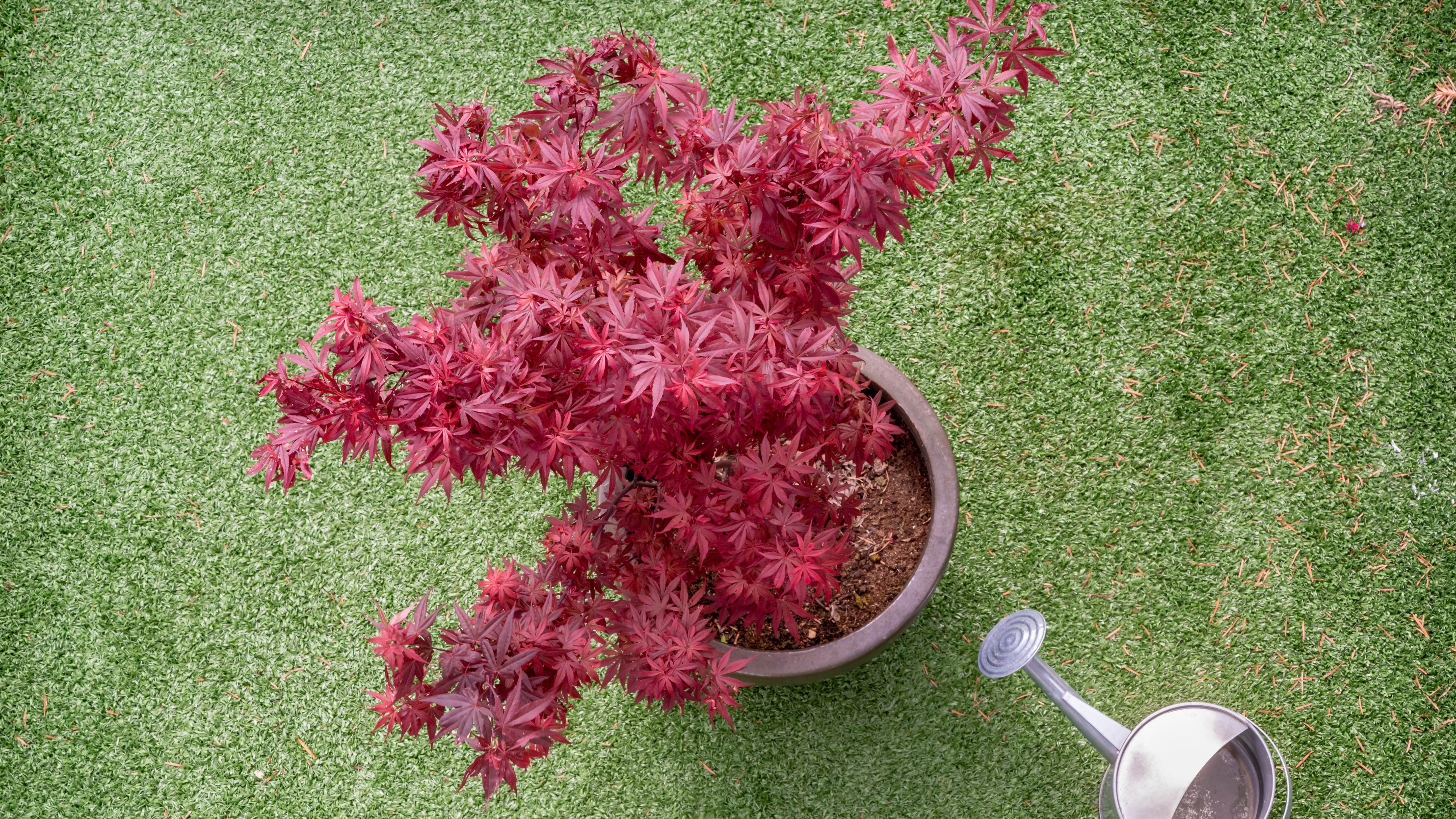5 best trees to grow in containers

Have you always fancied the idea of growing your favorite trees, but don’t have a sprawling backyard or outdoor space? You’ll be glad to know there are certain trees that can grow just as well in containers. Whether you have a small yard, patio or even a balcony garden, these container-friendly trees are low-maintenance, and will spruce up any outdoor space.
Of course, not all trees can thrive in containers, and so it’s important to check the variety/species and care requirements before choosing your tree. Experts suggest selecting a dwarf variety that is best suited to your climate, so it can be exposed to the correct light and moisture levels.
In addition, ensure you place it in the right-sized container to allow sufficient space. Most fruit trees on miniature rootstocks will need a container no less than 18 inches in depth and up to 24 inches circumference — and ensure it’s well-drained.
So, whether you want to pick your own homegrown fruit or have a striking, lush feature on your porch, here are 5 best trees to grow in containers.
We've also found 7 fast-growing trees for shade and privacy. Plus, here are the 7 best flowers to plant in the fall and 7 best small trees for a compact yard.
1. Lemon/citrus trees

Dwarf citrus trees such as lemon, lime, orange or kumquats, can all be grown in containers. These tend to thrive in warmer, tropical temperatures and full sunlight. They also do best in high humidity, and require watering about once a week during summer months.
It's recommended to plant lemon and orange trees in terracotta pots/containers as they lose moisture more quickly — and place them in a sheltered, sunny spot. The key tip here is good drainage since citrus trees won’t survive in waterlogged soil.
Get instant access to breaking news, the hottest reviews, great deals and helpful tips.
Alongside watering, experts recommend feeding citrus trees weekly in spring and summer with a specialist citrus or seaweed fertilizer. Since citrus trees are sensitive to frost, bring the container indoors over winter and water sparingly.
Not only will citrus trees provide juicy, homegrown produce, but will add a fresh and fragrant smell to your home.
2. Japanese maple tree

With its unique shape, and vibrant leaves, Japanese maples (acer palmatium), are actually hardy trees that grow well in containers. Ideally, opt for smaller or dwarf varieties of maples. In addition, the size of the container should be twice the size of the tree’s root system, and should have drainage holes at the bottom.
Once potted, water regularly, and use a water-based fertilizer during the spring months. Bear in mind the soil should be moist, but not soaking wet, and maples tend to grow best in a sheltered spot away from strong winds. Japanese maple trees can look great on patios, porch or on a balcony garden.
3. Olive trees

Olive trees are popular in both indoor and outdoor spaces, and can look more striking when placed on porches and patios. The best time to grow an olive tree is in spring, after the frost is over. Ideally, plant in a clay or wood container, and these adaptable trees will do best in a potting soil and perlite mix — preferring rocky, well-draining soil.
Native to the Mediterranean, olive trees require at least six hours of full sunlight daily. Be sure not to overwater, only watering when the top few inches of the soil is dry. During colder weather however, it’s best to bring in containers indoors before that frost hits again. If possible, place it near a sunny window so it can still enjoy sufficient light.
4. Dwarf apple tree

If you enjoy the taste of homegrown apples, but don’t have a yard (or an orchard!), you can surprisingly grow apples in a container.
Once you choose your variety, you’ll need to select your dwarf rootstock that is suitable for container growing. Such rootstocks will ensure the tree size is less than 2m, and won’t grow any taller than that.
In addition, make sure your clay or wood container has sufficient drainage holes at the bottom to allow air to reach the roots. Experts also recommend using an organic, potting mix with a slightly acidic to neutral pH level (6-6.8) for best results.
Typically, apple trees can thrive in moderate summer heat to cooler temperatures — and tend not to cope well in extreme heat. In their first year, it requires regular watering, but don’t overwater to avoid root rot and mildew.
If well looked after, you’ll soon have juicy apples ready for the picking, or to use in one of the best juicers.
5. Fig trees

If you want to add a Mediterranean feel to your yard or patio, fig trees can look great in containers. This popular, edible fruit is actually one of the easiest trees to grow. Unlike other trees, fig trees can bear fruit within one or two years of planting.
You’ll need to find either a clay, ceramic or wood container with plenty of drainage holes. Ideally, select a pot that is about 6-8 inches wider — as some varieties can grow up to 30 feet tall. However, there are many dwarf fig trees that are more suitable for growing in containers.
Typically, figs require full sun, and water your container tree when 1-2 inches of topsoil feels dry to the touch. It’s also recommended to use an organic fertilizer twice a year for maximum, healthy growth.
More from Tom's Guide
- 5 backyard plants that could damage your home
- Check out these 5 clever ways to upscale a balcony
- Or these 5 easy ways to grow a vertical garden

As the Homes Content Editor, Cynthia Lawrence covers all things homes, interior decorating, and garden-related. She has a wealth of editorial experience testing the latest, ‘must-have’ home appliances, writing buying guides and the handy ‘how to’ features.
Her work has been published in various titles including, T3, Top Ten Reviews, Ideal Home, Real Homes, Livingetc. and House Beautiful, amongst many.
With a rather unhealthy obsession for all things homes and interiors, she also has an interior design blog for style inspiration and savvy storage solutions (get rid of that clutter!). When she’s not testing cool products, she’ll be searching online for more decor ideas to spruce up her family home or looking for a great bargain!
